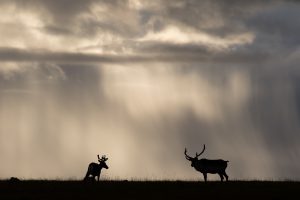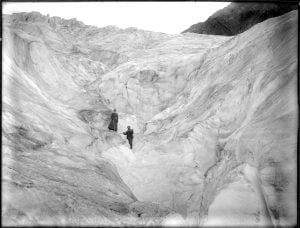Traditionally, when a young man of the community came of age, Roberts explained, he would go out and fast for four days and nights, then come to this rock to paint his vision. There’s the mythical thunderbird, generating lightning and thunder with each powerful wingbeat, and human figures inside a semi-circle with hands upraised — probably a sweat lodge ceremony. A third, which seems to show a man hunting a caribou with the aid of a gun and a dog, is the subject of some dispute. Some people think it was painted more recently; others say it was a vision of the future.
Our exposed faces had already been thoroughly scoured by the granular snow. Were we absolutely sure we wanted to continue up the river to see the Twin Falls? Roberts asked. On a good day the journey would take 30 minutes; today, travelling against the current and into the wind, it would be at least 45.
We exchanged glances, a silent game of chicken. On the one hand, we were all very, very cold.













